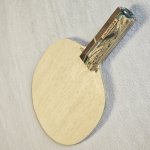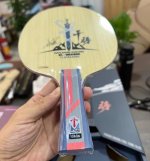This user has no status.
Well-Known Member
Limba is denser and harder than Ayous. The medial ply in a 5+2 is usually horizontal, so the individual stiffness of that wood layer does not impact longitudinal stiffness directly. It does impact transversal stiffness, so all else being equal it will feel a bit more solid and harder. Harder blades tend to have a more linear behavior, so there will be an increase in the top end reaction. The frequency reading will be more or less the same, there might be a small increase because the mode we measure is the 6th, which reflects the out of plane deformation, and that will be smaller. So basically we would be increasing the relation between the 1st and 6th modes.
Thanks a lot for the explanation, very helpful. And the patience: Limba VS. Ayous in the second layer
Dude, please! I am so bored by the same rubber threads about random generic ESN rubbers. I get the impression that people don't talk about blades since they don't actually feel the difference so they have not much to say.
Yeah. It's harder because you need the same rubbers for the comparison to be meaningful. It's off-season now for me, I want to spend the "non-main" rubbers












